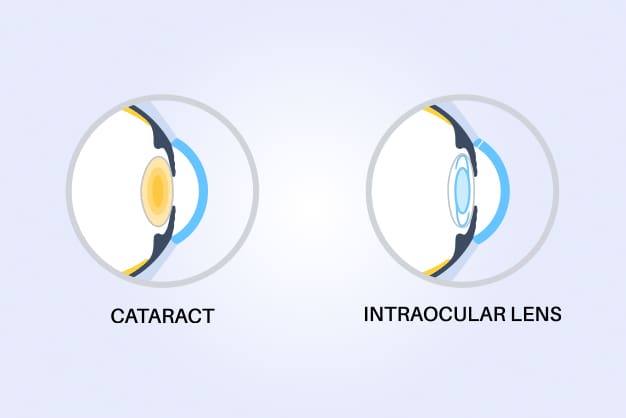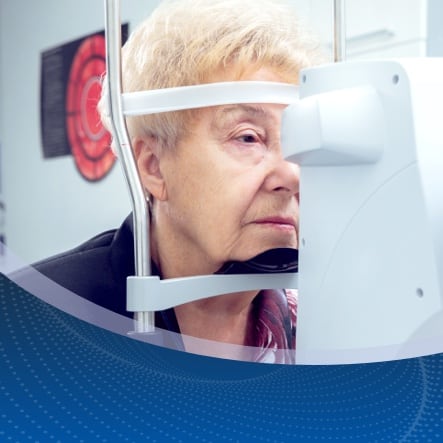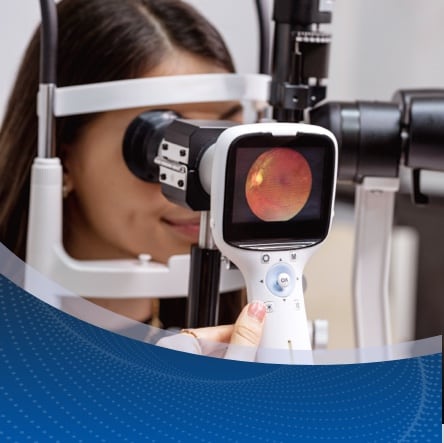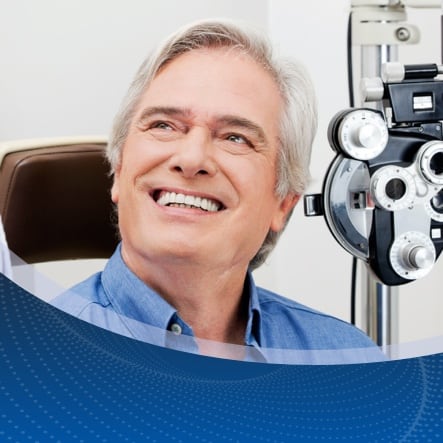Reviewed By: Leslie Forehand
Verified By: Paul M. Griffey M.D.
Today’s patients have access to cataract treatment options like never before. Modern advancements in laser cataract surgery help address various eyesight issues, including nearsightedness, farsightedness, astigmatism, and presbyopia—the gradual loss of focus.
These advanced intraocular lenses (IOLs) improve visual acuity and the overall quality of life, allowing for clearer vision in daily activities. The Griffey Eye Care & Laser Center has a full suite of IOLs tailored to meet your unique needs and preferences.
If you’re curious about which cataract lens options might be ideal for your upcoming surgery, schedule an appointment with our cataract surgeons to discuss.
What Are The 4 Types Of Cataract Lenses You Can Choose From?
1. Extended Depth-of-Focus (EDOF) Lens
Extended depth-of-focus (EDOF) lenses are a new advancement in intraocular lenses (IOLs) for treating presbyopia. Unlike traditional multifocal (MF) IOLs, which create distinct focal points, EDOF cataract lens options provide a single, elongated focal point.
The design has a greater depth of focus and helps remove visual issues like glare and halos. EDOF achieves this by intentionally introducing spherical aberrations, facilitating smoother transitions between various distances, making it one of the most reliable cataract surgery lens options for patients seeking balance.
However, while EDOF cataract surgery lens options are perfect for intermediate vision, their near-vision capabilities can be limited, often at moderate performance. To meet the needs of many different patients, EDOF lenses can be combined with MF designs to create hybrid IOLs for a well-rounded visual experience without compromising image quality.
2. Toric Lens
Toric cataract surgery lens options correct astigmatism and feature a unique shape that differs from standard spherical lenses. While traditional contact lenses resemble a slice of a beach ball, toric lenses are shaped like a donut, which provides varying refractive power across their surface.
The unique geometry addresses the irregular curvature of the cornea or lens that characterizes astigmatism, which results in distorted or blurry vision when viewing fine details. For best results, patients should focus on getting the fitting correct.
Toric IOL lens options are designed with features like ballasting and thin-thick zones to maintain their orientation on the eye and deliver clear vision—an example of advanced cataract surgery lens options available today. They can be offered as daily disposables or rigid gas-permeable options.
3. Monofocal Lens
The Monofocal lens is a type of IOL that has a fixed focus at one distance. This allows your ophthalmologist to select the best visual range. Whether near, intermediate, or far, the chosen focus will remain constant post-surgery.
When light enters the eye, the IOL focuses it onto the retina, similar to the eye’s natural lens. Most monofocal IOLs are made from a soft, flexible material, roughly a third the size of a dime, for easy implantation.
Traditionally, laser cataract surgery using monofocal lenses focuses on improving distance vision, often leaving patients needing reading glasses for close-up tasks. This approach differs from Monovision, where one eye is adjusted for distance vision while the other is set for near vision.
4. Vivity MF Lens
The Vivity IOL is a revolutionary non-diffractive extended depth of focus (EDOF) intraocular lens designed to enhance visual clarity for cataract surgery patients. Utilizing advanced X-WAVE technology, the Vivity IOL smoothly transitions light across its surface without splitting, providing a continuous and extended range of vision. This allows for clearer sight at various distances, making daily activities and digital screen usage more comfortable.
The Vivity IOL lowers common visual aberrations such as halos and glare, which are often experienced with standard multifocal lenses. It also has the added benefit of filtering harmful UV and blue light.
Available in a toric model, it provides a solution for astigmatism while addressing presbyopia. 92% of patients with the Vivity IOL report satisfaction and would recommend it to others.
Which Lens is Best for Me?
Choosing the right intraocular lens (IOL) for laser cataract surgery depends on your visual needs and lifestyle. Here’s a breakdown of each lens option and reasons why you might choose one:
Extended Depth-of-Focus (EDOF) Lens
- Ideal for patients seeking clear vision at intermediate distances, such as computer work.
- Suitable for those who experience issues with glare and halos from traditional multifocal IOL lens options.
- Provides a smoother transition between different distances for an improved overall visual experience, making it one of the preferred cataract lens options for modern patients.
Toric Lens
- Recommended for patients with astigmatism, correcting distorted or blurry vision.
- Essential for individuals looking for clarity in both near and far vision.
- Available as daily disposables or rigid options for tailored comfort.
Monofocal Lens
- Best for patients who need improved distance vision and are comfortable wearing reading glasses for close-up tasks.
- Reliable choice for those prioritizing simplicity and consistency in vision.
- Ideal for patients looking for a straightforward, effective solution without the complexities of multifocal options.
Light Adjustable Lenses
- Suitable for patients who desire customization post-surgery, allowing adjustments to be made for optimal vision.
- Recommended for those looking for flexibility in correcting refractive errors such as myopia and hyperopia.
- Provides a unique opportunity for patients to tailor their vision correction after the lens is implanted.
Trifocal Lenses
- Among the most advanced types of lenses for cataract surgery, ideal for patients with advanced presbyopia who need clear vision at near, intermediate, and far distances.
- Best for individuals who prefer to minimize dependency on glasses for most activities.
- Effective for enhancing reading speed and contrast sensitivity, making daily tasks easier without additional eyewear.
Frequently Asked Questions
Is it better to be nearsighted or farsighted after cataract surgery?
Being a bit nearsighted after laser cataract surgery is usually seen as a plus, especially if you often do close-up work like reading or using a computer. It can help you see things clearly up close without extra glasses. However, the ideal option will depend on your personal lifestyle and needs, so it’s important to discuss this with your ophthalmologist before your surgery.
What is the difference between standard IOL and premium IOL?
Standard intraocular lenses (IOLs) typically provide clear vision at one distance, and glasses are often needed for other ranges. Premium IOLs, on the other hand, offer advanced features, such as multifocal or toric options, which help correct vision at multiple distances and may reduce or eliminate the need for glasses altogether.
Are premium IOLs (like multifocal, EDOF, or toric lenses) covered by insurance?
Most insurance plans, including Medicare, cover only standard monofocal lenses. Premium lenses—such as multifocal, EDOF, toric, and light adjustable lenses usually involve additional out-of-pocket costs. Your surgeon’s office can help you understand the costs and what your insurance may cover.
What side effects or visual disturbances can occur with different IOLs?
Some patients with multifocal or trifocal lenses notice halos, glare, or starbursts around lights, especially at night. EDOF lenses may also cause mild halos, but generally have fewer issues than multifocal lenses. Toric and monofocal lenses have fewer visual side effects, but you may still need glasses for some activities. Your eye doctor will discuss possible side effects based on your lens choice.
How long do intraocular lenses last after cataract surgery?
Intraocular lenses are designed to last a lifetime. Once implanted, these types of lenses for cataract surgery typically do not wear out or need replacement.
What is the difference between monovision and multifocal IOLs?
Monovision uses two monofocal lenses: one eye is set for distance vision, the other for near vision. Your brain adapts to use each eye for different tasks. Multifocal IOLs, on the other hand, allow each eye to see at multiple distances by splitting light into different focal points. Both options reduce dependence on glasses, but the experience is different. Your doctor can help you decide which approach may suit you best.
What is the recovery process like after cataract surgery with different IOLs?
The recovery process is similar for all lens types. Most people notice improved vision within a few days. You may need to use eye drops and avoid strenuous activities for a short period. Some premium lenses, like light adjustable lenses, require additional appointments for adjustments after surgery. Your surgeon will provide specific instructions based on your lens choice.
Book Your Cataract Consultation
Selecting the appropriate lens involves considering your specific vision goals and discussing them with your ophthalmologist to achieve the best outcomes.
For more information on cataract symptoms and the best IOL fittings, book your appointment with Griffey Eye Care & Laser Center.
**Please note that the suggestions provided in this blog are for general informational purposes only and may not be suitable for your specific insurance plan and cataract needs. It is important to consult a qualified healthcare professional for personalized advice and treatment.**













